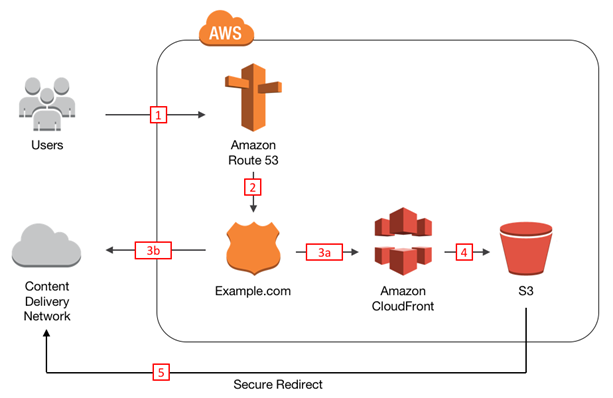AWS Security Blog
Tag: Amazon Route 53
How to Control TLS Ciphers in Your AWS Elastic Beanstalk Application by Using AWS CloudFormation
Securing data in transit is critical to the integrity of transactions on the Internet. Whether you log in to an account with your user name and password or give your credit card details to a retailer, you want your data protected as it travels across the Internet from place to place. One of the protocols […]
How to Help Protect Dynamic Web Applications Against DDoS Attacks by Using Amazon CloudFront and Amazon Route 53
Using a content delivery network (CDN) such as Amazon CloudFront to cache and serve static text and images or downloadable objects such as media files and documents is a common strategy to improve webpage load times, reduce network bandwidth costs, lessen the load on web servers, and mitigate distributed denial of service (DDoS) attacks. AWS […]
How to Protect Your Web Application Against DDoS Attacks by Using Amazon Route 53 and an External Content Delivery Network
Distributed Denial of Service (DDoS) attacks are attempts by a malicious actor to flood a network, system, or application with more traffic, connections, or requests than it is able to handle. To protect your web application against DDoS attacks, you can use AWS Shield, a DDoS protection service that AWS provides automatically to all AWS […]
The Most Viewed AWS Security Blog Posts in 2016
September 9, 2021: Amazon Elasticsearch Service has been renamed to Amazon OpenSearch Service. See details. The following 10 posts were the most viewed AWS Security Blog posts that we published during 2016. You can use this list as a guide to catch up on your blog reading or even read a post again that you […]
How to Set Up DNS Resolution Between On-Premises Networks and AWS Using AWS Directory Service and Amazon Route 53
As you establish private connectivity between your on-premises networks and your AWS Virtual Private Cloud (VPC) environments, the need for Domain Name System (DNS) resolution across these environments grows in importance. One common approach used to address this need is to run DNS servers on Amazon EC2 across multiple Availability Zones (AZs) and integrate them […]
Register for and Attend This August 20 Webinar–Best Practices for DDoS Resiliency
As part of the AWS Webinar Series, AWS will present Best Practices for DDoS Resiliency on Thursday, August 20. This webinar will start at 10:30 A.M. and end at 11:30 A.M. Pacific Time (UTC-7). AWS Security Solutions Architect Jonathan Desrocher will outline how to use AWS services like Elastic Load Balancing (ELB), Auto Scaling, Amazon CloudFront, […]





